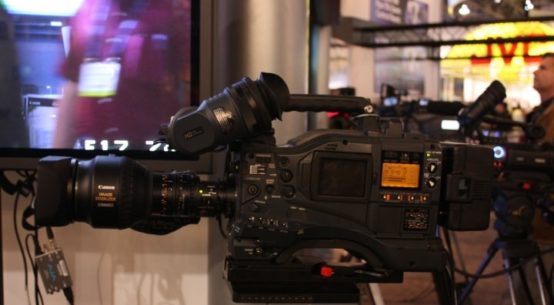16mm is an economical film Format used for motion-picture production
16mm film is a popular and economical film gauge mainly used for student and independent films and commercial productions mainly meant for non-theatrical releases. 16mm film literally refers to the width of the film, similar to the film gauges of 8mm film which is narrower than 16mm, and the 35mm, 65mm, and 70mm films which are wider than 16mm.
Launched by Eastman Kodak in 1923, the 16mm film format provided a less expensive option for film work, as compared to the standard film gauge 35mm. Even way back its earlier years, it was considered as a sub-standard film by the professional industry.
The dawn of 16mm happened when Kodak hired Willard Beach Cook for the creation of the new 16mm Kodascope Library, a venue for making home movies and a marketplace to buy or rent films in the 16mm film format. It is beneficial to note that the use of film during these days was the counterpart of the use of consumer camcorders of the modern times.
Since 16mm was intended for amateur and home movie use, it became the first film format to stop using nitrate film, a film that is highly flammable due to its nitrate base (35mm nitrate films were discontinued by 1952). The acetate safety film which replaced the nitrate film base was first used in the 16mm film.
By the 1930s, the 16mm film became more popular in the educational market. Further development helped boost its use as optical sound tracks were added on the film. In 1935, the release of the Kodachrome, a type of color reversal film successfully mass-marketed brand of film, also added to the appeal of the 16mm film format.
As 16mm films were extensively used in World War II, there was a great demand for the expansion and production of the format. During the post-war years, 16mm professional filmmaking became even more popular. Other than its use for making home movies and professional filmmaking projects, 16mm film stocks were mainly used for the documentation needs of various institutions: government, business, medical, and industrial clients.
The advent of television further enhanced the use of 16mm film for news-gathering and shooting TV programs. However, within a considerably the same time frame, the use of 16mm for home movies bowed down to the more cost-effective 8mm and Super 8mm film formats.
Modern Use of 16mm Film
Until now, 16mm film stocks are primarily used as an amateur and/or less expensive alternative to “film quality” motion picture production.
While the high definition (HD) format is already a top choice for most non-theatrical or even low-budget theatrical productions, 16mm is still extensively used when there are specific factors requiring the use of the film format over the digital format. High quality programs in the United States and United Kingdom (from documentaries to top-rated dramas) contribute most to the commercial use of the 16mm format today. For instance, the first season of Sex and the City was shot in 16mm. The Academy Award-winning film The Hurt Locker was shot using Super 16mm. The format is mainly used for independently produced documentaries, feature films, and short films worldwide as well.
Because of the generally robust and versatile qualities of the film format and film cameras when shooting scenes in extreme climates, uncontrollable lighting conditions, and various guerilla-style filmmaking needs, the 16mm film is more practical to use, compared to the significantly more expensive 35mm film and the more complicated physical operation and demanding environmental limitations of HD film equipment.
16mm vs. 35mm
As a benchmark, a typical 400-feet can of 16mm film negative is equivalent to about 11 minutes worth of footage. This provides way much coverage compared to a typical 400-feet can of 35mm film negative which is equivalent to only about 3.5 minutes of footage. The prices of 16mm film stocks (both negatives and positives), regardless of the manufacturer (present top manufacturers of films are Kodak and Fuji), are also much lower than 35mm film stocks.
The regular aspect ratio of 16mm is 1:37, while 35mm is 16:9. In this regard, 35mm has an advantage over 16mm because of its longer width and its larger space for utilizing images (offering better picture quality than 16mm). However, for productions being released for television only, and not for theatrical screenings (big screen showings), the picture quality advantage of 35mm over 16mm is not that useful anymore, as the smaller screen won’t show much difference in terms of picture resolution. Yet, this is currently being contested by what HD TVs and Blu-ray discs can offer. The optimum resolution and aspect ratio difference coming from 35mm, compared to 16mm, can relatively show in the domain of HD.






